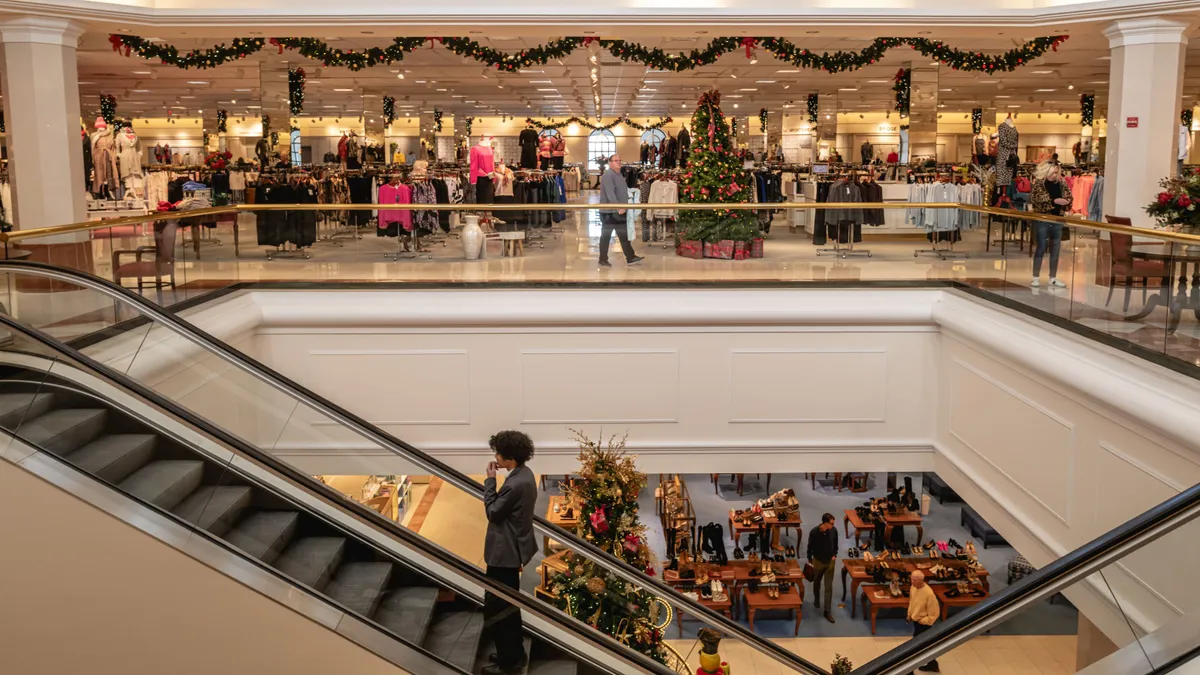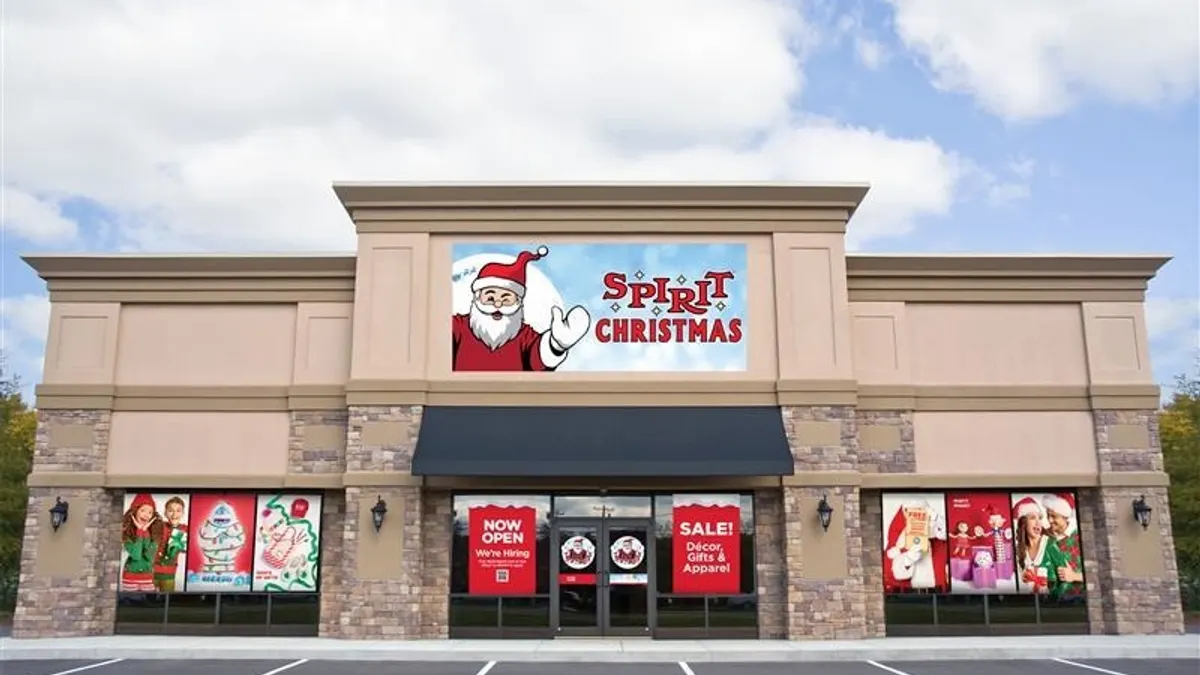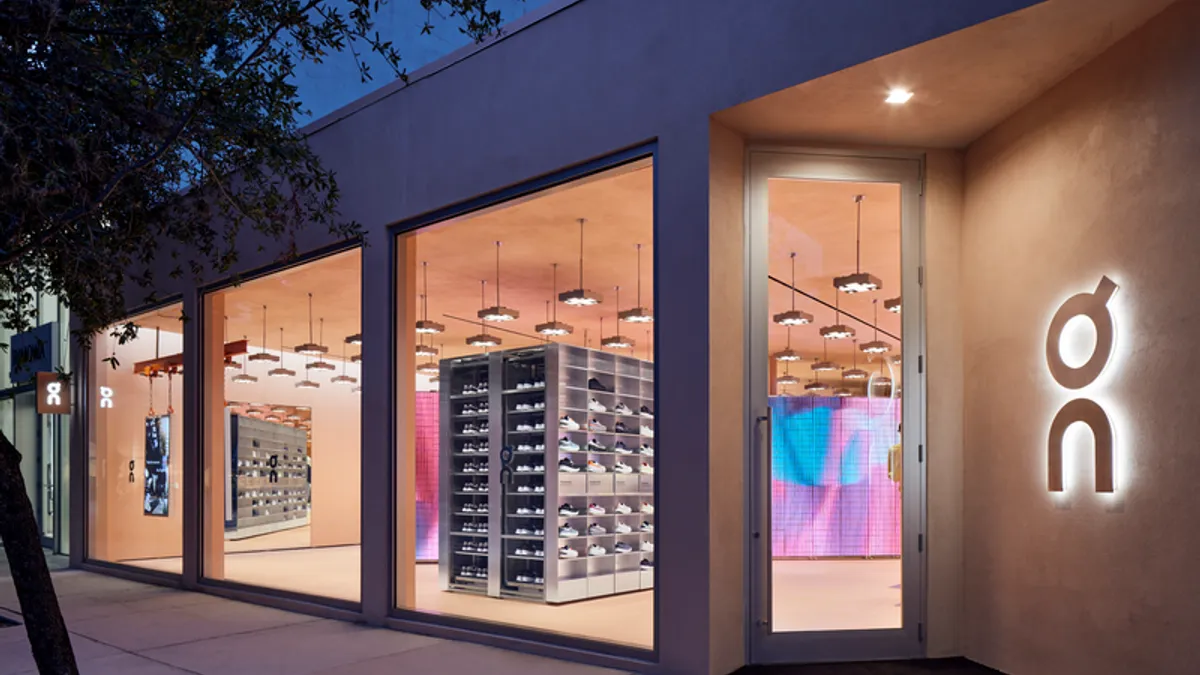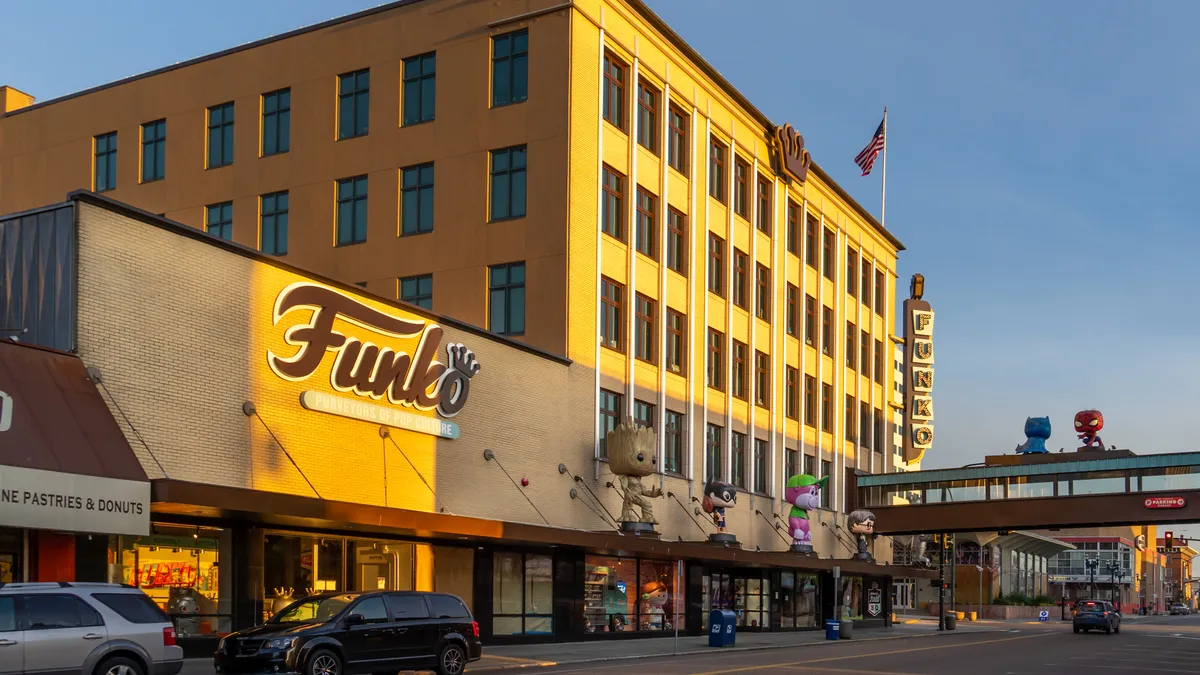J.C. Penney was one of the lucky ones, if you can call any company in bankruptcy lucky.
The retailer filed for Chapter 11 in May without a definitive plan for what would come next. Penney had a reorganization agreement with lenders, but it came with contingencies and milestones that could potentially have allowed for liquidation. It was also quietly for sale. In other words, all options were open — reorganization, sale, liquidation. Amid grueling and protracted sale negotiations, David Jones, the federal judge overseeing Penney's case, allowed Penney to extend its deadlines to let talks to continue. Jones justified doing so by saying that "the alternative is the death of an entity."
Penney got its deal, with two major landlords agreeing to acquire it. But many other retailers this year, amid unprecedented disruption created by the COVID-19 pandemic, have liquidated entirely after failing to find a buyer or some other form of salvation.
In broad strokes, one of three things typically happen when retailers file for bankruptcy: lender-led reorganization, a sale of the company, or a wind down of the business and liquidation of its assets. The calculus that typically takes place is which is the best way for secured lenders and other creditors to be repaid. If they think the company is valuable and viable but just needs some trimming in the balance sheet and footprint, they could opt to convert their debt investment into equity and reorganize the company.
But that's a longer, more complicated path to repayment. A sale provides immediate cash for creditors, and they don't have to wait for returns on their ownership equity in a reorganized company. Liquidation provides a similarly faster path to repayment. You sell the inventory and other assets, including often a retailer's intellectual property, and then close shop and spread around the proceeds of the going-out-of-business sales among creditors.
For everyone else, the difference between a sale and a liquidation is thousands of jobs, an outlet for suppliers and manufacturers, a store brand that thousands or millions of customers still use, and so on.
Those decisions get incredibly complicated depending on a company's capital structure, who is holding what forms of debt and how much, and what their interests and risk appetites are. The pandemic has complicated things further.
Liquidating in a pandemic is no simple matter. Pier 1 and Modell's, for example, had to freeze their going-out-of-business sales during the nationwide store closures this spring. As retail's reopening approached, it wasn't clear if customers would come to store closing sales. That affected proceeds from liquidations and forecasts of proceeds, all of which inform the decision of whether or not to liquidate a chain.
"We were pretty conservative in our approach, and in most cases they exceeded those expectations," Michael McGrail, COO of Tiger Capital Group, said of the liquidations they've run recently. The company specializes in liquidation and asset disposition. "Were they as good as pre-COVID? Not 100%, but closer to that than the doomsday that we were all thinking of."
Jack Rapp, executive managing director of Tiger Capital Group, noted that after Modell's, which their firm helped liquidate, reopened its doors and re-started their going-out-of-business sales, people showed up. "People are anxious to get back into the stores," Rapp said.
Joseph Malfitano, managing member of disposition advisory firm Malfitano Partners, also said that liquidation sales beat expectations. Running them, which is a kind of art form in normal times, has come with extra logistical difficulty. That includes safety procedures, local regulations, bringing back furloughed employees and other factors to navigate associated with the pandemic.
"Deals that we're running, we're kind of taking COVID risk in mind and taking expenses in mind," Malfitano said. "We're running sales and accelerating discount much faster to get out of stores, to avoid COVID risk and avoid prolonged sales that have the [operating] expenses kind of eat up the recovery."
COVID-19, and the financial turmoil it brought early on, may well have affected the decisions around whether to keep around or wind down a given retailer, though not necessarily in straightforward, consistent ways.
According to Debtwire data provided to Retail Dive, the share of retail bankruptcies filed this year that involve liquidation is down significantly compared to recent years, to just over one quarter of retail bankruptcy cases so far in 2020 compared to approximately half of all retail bankruptcies in prior years. Substantial asset sales have fallen as well, to 52% of cases in 2020 from 69% of cases in prior years.
The uncertainty and difficulty around liquidation proceeds, indirectly, may have helped keep some retailers alive by incentivizing some lenders to opt for reorganization.
"The COVID pandemic caused more term loan lenders, people in the second tier position to be more flexible than they otherwise would and to save companies from going out of business," Malfitano said. "Because their recovery projection on a 'We're just gonna close it and we're done' [situation] was not so good."
At the same time, financial market turmoil early on, as well as the prospect of prolonged sales and profit declines in retail, may have led other lenders to pull the plug rather than take on retailers with struggles ahead of them for an unknown period.
"I'm sure there's a few that, in hindsight when we look back at this time, we're all going to say, 'You know, that one should have survived,'" McGrail said.
Here's a look at the major retailers this year that didn't:
1. SFP Franchise Corp. (Papyrus)
Founded in 1950 by Marcel and Margrit Schurman, the Schurman Group started out as an importer and wholesaler. The company was based on the idea that there was a U.S. market for "greeting cards and stationery that intersected with the world of fine art," a restructuring officer would say early this year in court papers.
As late as fall of 2019, the parent of Papyrus, Paper Destiny, American Greetings and Carlton Cards retail stores, was trying to negotiate better terms with its landlords as it struggled along with many other mall-based specialty retailers.
Debt to fuel an expansion just ahead of a major decline in mall traffic, as well as capital costs and financial tensions with a major supplier, overpowered the retailer. In January, the company called it, and opted to close its 200-plus stores. After quietly initiating a full-scale liquidation, it entered Chapter 11 in late January to complete its plan to wind down.
2. Pier 1
A few years of cratering sales and failed turnaround efforts sent Pier 1 into bankruptcy court this year. Early in the going, it had hopes of finding a buyer in Chapter 11 or possibly reorganizing. Nobody emerged, despite reports that it had a potential suitor.
With the company's cash burn, and a market position shattered by rising forces in the home category like Wayfair and TJX Co.'s Home Goods, it would have been a tough sell to a buyer. Without a sale, Pier 1 moved in May to liquidate its physical business. Later in the summer, the retailer sold its intellectual property and other online assets for $31 million to Retail Ecommerce Ventures, which also has acquired the IP of Dressbarn and Modell's Sporting Goods.
On its website today, the Pier 1 brand says it has limited products available for sale while it works to build out a wider assortment.
3. Art Van Furniture
Named after Art Van Elslander, who opened the first Art Van location in Detroit in 1959, the home goods chain eventually became one of the leading furniture retailers in the Midwest. In recent years, though, legacy furniture retailers have lost ground to online retailers like Amazon and Wayfair, as well as from mass merchants and off-pricers. The company also took on debt and went into aggressive expansion mode after being acquired by private equity firm Thomas H. Lee Partners in March 2017.
Under "extreme market conditions and faced with limited liquidity," the furniture retailer filed for Chapter 11 bankruptcy protection in Delaware. At the outset of bankruptcy, the retailer began moving to close all its stores even as it searched for a possible buyer to take it over. None arose, and the company liquidated. Some of the retailer's stores were taken over and renamed under Love's Furniture after a private equity firm bought them, according to news reports.
4. Modell's Sporting Goods
Modell's Sporting Goods was among the retailers in operation for more than a century before filing for bankruptcy this year. Founded in 1889, Modell's was still centered largely around New York when e-commerce penetration, big box competition and other blows sent it into bankruptcy. The company tried to avoid that outcome, pursuing various restructuring strategies out of court, including a sale.
But none materialized, and Modell's entered Chapter 11 in early March with a plan to liquidate all 134 of its stores. It still sought a sale while in bankruptcy, but with no luck. In August, Modell's sold its intellectual property, including its "Gotta Go to Mo's" jingle, to Retail Ecommerce Ventures for more than $3.6 million.
5. Roots USA
COVID-19 exacerbated the challenges for Canadian outdoor apparel retailer Roots' U.S. business, which was already racking up losses before the pandemic hit. In late April, the parent pulled the plug on Roots USA and put it in Chapter 7 bankruptcy with plans to close seven stores.
The parent company took over two U.S. stores, in Michigan and Utah, that the retailer said "play important roles in the Company's heritage and have well-established customer bases." Roots said it planned to keep serving the U.S. market through its e-commerce arm.
6. Stage Stores
Nearly a century old, Stage Stores rolled up numerous department store banners into a company formed after the Bealls and Palais Royal chains merged. In 2017, it bought the Gordmans banner and entered the off-price market.
Off-price was supposed to be Stage Stores' future. Just a year ago, amid a massive sales bump, the company announced an accelerated plan to convert all its remaining stores to the Gordmans banner by the end of 2020.
Things didn't go as planned. A tepid holiday led to a liquidity crisis, bankruptcy rumors, store closures and layoffs. Efforts to solve its liquidity problem stalled and ultimately, after the onset of the COVID-19 crisis, failed. Stage's bankruptcy story is similar to many others this year. It hoped to find a buyer. None emerged in time, and it ultimately liquidated.
In October, amid a bad cash crunch for the company as it wound down in Chapter 11, Stage Stores sold its IP and the lease to a Texas distribution center to Bealls Inc., a retailer which operates stores in Florida, Georgia and Arizona under the Bealls name but has no affiliation with the Bealls banner owned by Stage Stores.
7. RTW Retailwinds
The owner of the New York & Co. banner had issues going into the year. In December, RTW Retailwinds said it planned to close up to 30 stores as it posted comparable sales declines and had a retained deficit by the beginning of February, well before COVID-19 forced its stores closed.
The pandemic created a full blown catastrophe at the fashion retailer in the following months. In April, its CEO-elect resigned unexpectedly along with four board directors. With its stores closed, cash was so constrained that the retailer defaulted with landlords, vendors and its primary lender.
By the time RTW filed, it said it would close "a significant portion, if not all" its stores. Executives and their consultants had already determined prior to bankruptcy that a sale wasn't viable. Hope of salvaging any part of the physical business evaporated. In August, RTW sold its e-commerce business and IP in a bankruptcy auction to investment firm Saadia Group for $40 million.
8. Lord & Taylor
Lord & Taylor was the oldest department store in the U.S., tracing its history back to 1826. In recent years it had stalled under its former owner, Hudson's Bay Co., owner of Saks Fifth Avenue.
Hudson's Bay sold the chain to online apparel rental specialist Le Tote for $75 million just last year. That seemed to make possible a new, if not fully clear, phase for Lord & Taylor. The department store's audience of middle-class women, merchandising expertise and mid-century buildings in key suburban shopping locations likely appealed to Le Tote.
But it was short-lived, and no one can say what might have been if 2020 had played out differently. The COVID-19 store closures combined with apparel's ongoing struggles were too much to overcome. Lord & Taylor filed for bankruptcy in early August, and before the month was over signaled that, without a buyer, it would close its entire footprint of 38 stores.
9. Stein Mart
Stein Mart's year has been a roller coaster. It started 2020 with a deal in hand from a private equity buyer that would have kept it afloat after years of tepid sales. The financial upheaval this spring when COVID-19 first hit and shut down much of the economy ultimately killed the deal for Stein Mart.
CEO Hunt Hawkins said in court papers that, after Stein Mart's stores reopened this summer, customers were returning and the company may have been able to survive with support from lenders, landlords and suppliers. But then new waves of COVID-19 cases hit Texas, California and Florida, which together accounted for nearly 40% of Stein Mart's stores.
When the company filed for bankruptcy, executives knew chances for a sale were slim and moved to liquidate Stein Mart's footprint while still searching and hoping for a buyer. To date, nobody's stepped up. In October, Hilco Streambank was approved to market the retailer's intellectual property.
10. Century 21
After 60 years in business, and surviving even the 9/11 attacks on New York, East Coast off-pricer Century 21 moved to liquidate its 13 stores in Chapter 11 after COVID-19 crushed its business.
Insurance that helped it survive through the disruption of the 2001 terrorist attacks didn't help it for 2020's pandemic crisis. The company said insurers didn't pay $175 million in business interruption claims, leaving the retailer to fail.
"While insurance money helped us to rebuild after suffering the devastating impact of 9/11, we now have no viable alternative but to begin the closure of our beloved family business because our insurers, to whom we have paid significant premiums every year for protection against unforeseen circumstances like we are experiencing today, have turned their backs on us at this most critical time," Century 21 co-CEO Raymond Gindi, a son of the founders, said in a statement when the retailer filed in September.
In bankruptcy, the retailer is looking to sell its IP.






















